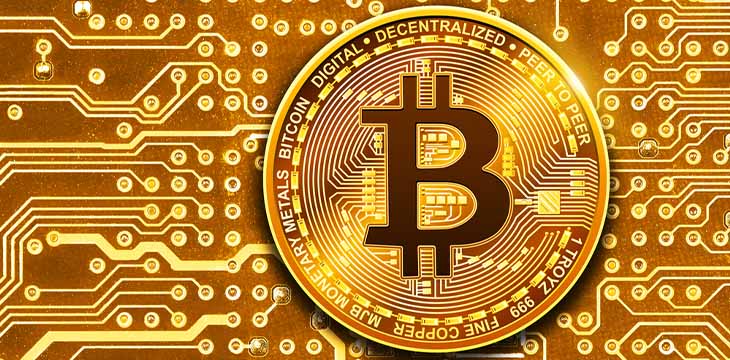
|
Getting your Trinity Audio player ready... |
Bitcoin’s long-term survival depends on an unconstrained, free-market transaction processing model. Transaction prices and quantities also determine the network’s energy (and overall) efficiency. Miners must innovate and invest in R&D as well as in raw hashing power, according to Jack Rogers, Senior Lecturer in Economics at the U.K.’s University of Exeter Business School. Rogers recently published a lengthy research paper examining these issues in-depth and devised a model to estimate what might happen in the short-, medium-, and longer term.
You can read and download Roger’s paper, titled “Bitcoin equilibrium dynamics: a long term approach,” here. He references several previous studies on the topic and adds to the research by separating the two major spending choices miners face to remain competitive. This competition is not only against other transaction processing operations, but also against non-blockchain fiat and data services.
Economic incentives for Bitcoin miners (transaction processors) are key to keeping the network secure, but trying to understand them can be daunting. There are ongoing and fierce arguments between rival protocols over what those incentives should be. Since the network isn’t yet 15 years old, no long-term data exists to study.
Existing academic studies tend to focus on the BTC network, thanks to its size and prominence. However, BTC’s artificially constrained transaction limit makes it more akin to a centrally-planned economy, preventing the examination of more complex free-market principles. In an unconstrained and free-market system like BSV blockchain, miners/processors have the freedom to allocate capital to improving and tailoring the way they collect and verify transactions—rather than having to invest everything in acquiring more SHA-256 hashing power—to engage their competitors.
‘Large transaction volume, or no volume at all’
Rogers reminds us that Satoshi Nakamoto said that by 2030, there would “either be very large transaction volume, or no volume at all” on Bitcoin.
He acknowledges that ideological principles and price speculation are probably driving Bitcoin network usage today more than actual utility in secure transactions and data services. BTC continues to thrive in its current, deliberately limited form as its users routinely point to price charts as “evidence” of its success and ignore the network’s high usage fees (contradicting many of Bitcoin’s earliest promises to be an affordable payments network for all humanity).
But how sustainable is this over a longer period of time? There are no guarantees the speculative price of BTC (or any other digital asset) can keep rising forever, yet it’s this very phenomenon keeping these blockchain networks afloat. In the short term, miners have little obvious incentive to look at greater energy efficiency or develop transaction price/processing structures to serve different users’ needs.
Transaction processors must seek efficiency and invest in innovation
Rogers says this will change as miners’ block-solving subsidies diminish over time (as the Bitcoin protocol dictates) and become increasingly dependent on fee collection to make profits.
“Forward-looking miners gain more profit by seeking and finding innovations and investing in the latest, most efficient technology. In the long run, although the proof of work process will always form the basis of establishing winners of these contests, miners will only earn reward by harvesting transaction fees into blocks, so their ability to run hashes has to be balanced with their ability to efficiently conduct these other activities,” Rogers stated.
BTC miners have paid lip service to energy efficiency improvements, though more investment has gone into setting up operations close to cheaper (or subsidized) power sources. BSV blockchain’s far greater flexibility in transaction sizes and types promotes innovation and options for efficiency in other areas, Rogers wrote.
“Bitcoin Script, the underlying language transactions are written in, allows highly complex conditionality, and hence token and smart contract systems to be built. What should happen if, for example, miners are able to charge different fees for different sized transactions?”
Rogers’ paper and long-term model contain plenty of economic formulae, which may be quite daunting to the casual reader. However, the underlying principles and questions raised are easier to understand, and are well worth reading about. There are several factors associated with not only Bitcoin mining but general use that aren’t examined in the mainstream news—factors that are likely to become very important as Bitcoin and other blockchain networks age.
CoinGeek Conversations with Dr. Jack Rogers: University of Exeter Bitcoin module tackles history of money

 11-22-2024
11-22-2024


